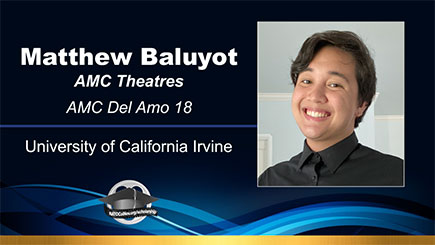|
Going to the movies is a very intimate experience. A good film will immerse you into an entirely new world and have you live vicariously through the eyes of the characters. While one can enjoy a film anywhere, only a theatre can immerse you. The deep darkness is broken by the shining light of the screen. Loud surround sound engulfing you into a brand new environment. These conditions are best achieved in the theatre. I believe one of the best examples that prove the impact watching a movie in the theatre can have is Jordan Peele's Us. Us follows a Black nuclear family as they fight to survive an onslaught of homicidal doppelgangers that have spent their entire lives trapped underground and wish to replace their human counterparts. While on the surface it seems like a generic dime-a-dozen slasher movie, it hides a deeper message under the surface, as common with Peele's films. The story is an allegory for racial and class privilege in the United States and it uses every tool in its arsenal to tell that story. Multiple key violent scenes throughout the film are backed by music by Black musicians which mirror how Black Americans throughout history have used music to fight through hardship. Despite being a horror movie and heavily relying on suspense, a majority of the film takes place on the bright and sunny Santa Cruz boardwalk, demonstrating how blatant the oppression of Black Americans is that there is no need to hide it in shadowy corners and moonless nights. The doppelgangers all have some physical or mental abnormality when compared to their human counterparts, demonstrating how those in America who are less privileged are most at risk of disability. However, a lot of details are lost in the home release and streaming release of this film. I think the part of the film that gets lost the most when not watching on the big screen is the effect sound has on the film. Many small details get lost when not coming out of the booming speakers of the theatre. Adelaide's quiet singing is hard to hear when coming through a phone speaker. The sound composition of the ballet fight scene between Adelaide and her tether sounds messy and muddled when not watched with the number of audio channels the movie was intended to be heard in. The immersion of the film is also greatly hurt when not watching it in a movie theatre. The audience is supposed to envision themselves in the shoes of the Wilson family to feel the suspense and terror of the situation they find themselves in. This is achieved by following each member of the family closely before the attacks start so that audience members can begin to connect with the character they relate the closest to. This concept works in the theatres where the only place to look is on the screen, but it loses its full impact if you can get distracted by a passing car or have to stop the movie to answer a phone call. The movie makes very deliberate choices to reward and invest those that are paying attention, it is just very unfortunate that watching the movie outside of the theatre makes it hard for viewers to be rewarded. Ultimately, Us is a movie that uses intentional scene framing, sound composition, story elements, and developed characters as a way to both entertain the audience and tell an important message about racial disparity in America. Watching this film on the big screen perfectly compliments all the artistic choices that Jordan Peele put into the creation of this movie, and while it is still perfectly enjoyable outside of the theatres, the experience one will get watching this movie on a phone or tablet will be greatly diminished when compared to a movie theatre. |
|
||||||
Copyright ©
2025
NATO CA/NV

